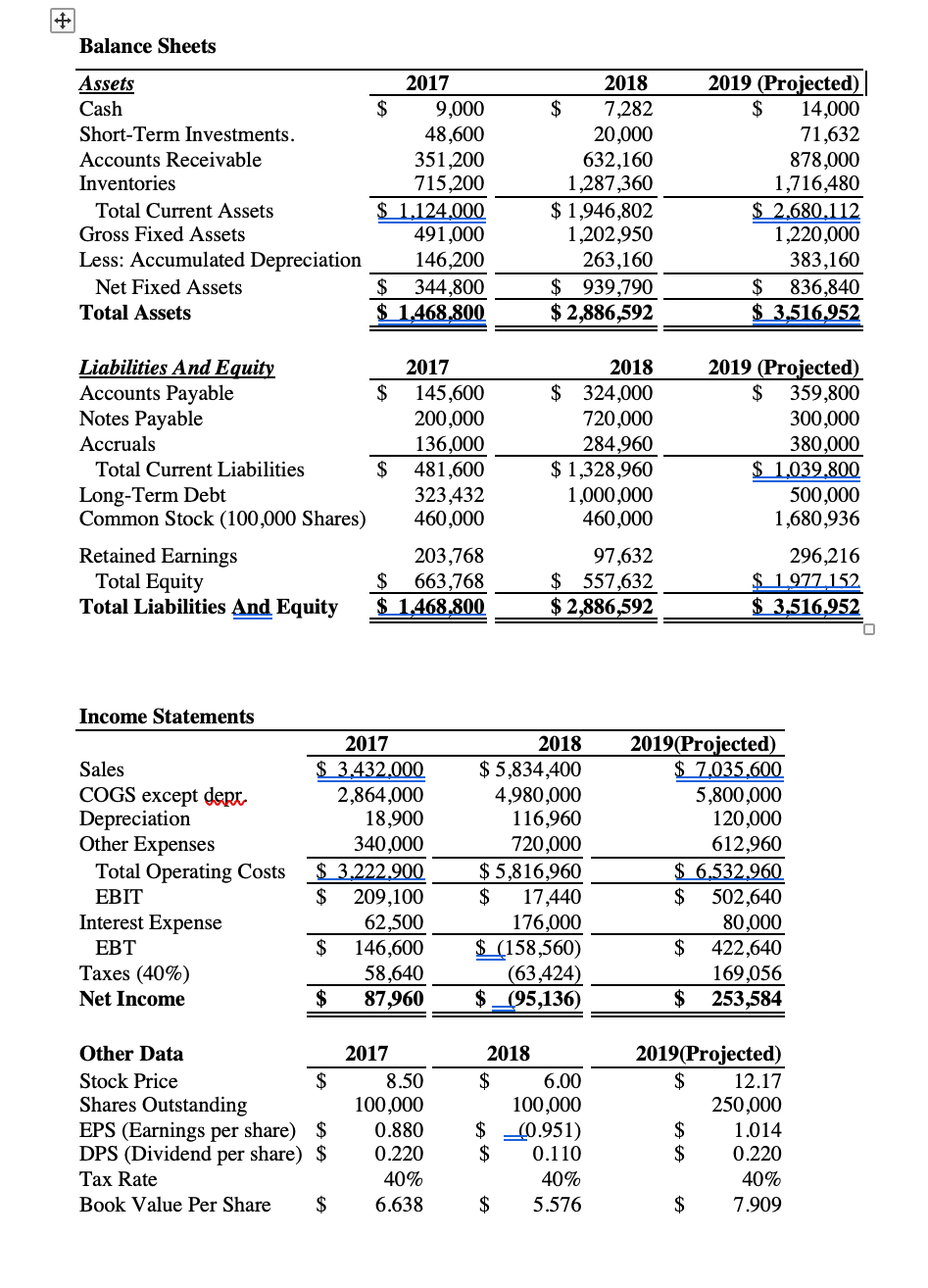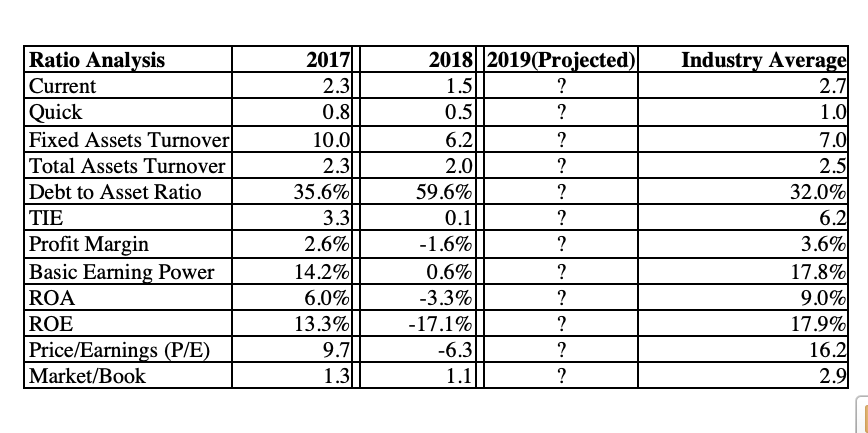Question
You are a financial manager in Omega Corporation. You have the task of getting the company back into a sound financial position. Omega Corporations 2017
You are a financial manager in Omega Corporation. You have the task of getting the company back into a sound financial position. Omega Corporations 2017 and 2018 balance sheets and income statements, together with projections for 2019, are shown in the following tables. The tables also show the 2017 and 2018 financial ratios, along with the industry average data. Your assignment is to answer the following questions. Provide clear explanations, not yes or no answers. Show your work for the calculations.


Why are ratios useful?
Calculate the 2019 current and quick ratios based on the projected balance sheet and income statement data. What can you say about the companys liquidity position in 2017, 2018, and as projected for 2019?
We often think of ratios as being useful (1) to managers to help run the business, (2) to bankers for credit analysis, and (3) to stockholders for stock valuation. Would these different types of analysts have an equal interest in the liquidity ratios?
Calculate the 2019 fixed assets turnover, and total assets turnover. How does the firms utilization of assets stack up against other firms in its industry?
Calculate the 2019 debt to asset ratio and times-interest-earned. How does the firm compare with the industry with respect to financial leverage? What can you conclude from these ratios?
Calculate the 2019 profit margin, basic earning power (BEP), return on assets (ROA), and return on equity (ROE). What can you say about these ratios?
Calculate the 2019 price/earnings ratio and market/book ratio. Do these ratios indicate that investors are expected to have a high or low opinion of the company?
Balance Sheets Income Statements \begin{tabular}{|l|r|r|r|r|} \hline Ratio Analysis & 2017 & 2018 & 2019 (Projected) & Industry Average \\ \hline Current & 2.3 & 1.5 & ? & 2.7 \\ \hline Quick & 0.8 & 0.5 & ? & 1.0 \\ \hline Fixed Assets Turnover & 10.0 & 6.2 & ? & 7.0 \\ \hline Total Assets Turnover & 2.3 & 2.0 & ? & 2.5 \\ \hline Debt to Asset Ratio & 35.6% & 59.6% & ? & 32.0% \\ \hline TIE & 3.3 & 0.1 & ? & 6.2 \\ \hline Profit Margin & 2.6% & 1.6% & ? & 3.6% \\ \hline Basic Earning Power & 14.2% & 0.6% & ? & 17.8% \\ \hline ROA & 6.0% & 3.3% & ? & 9.0% \\ \hline ROE & 13.3% & 17.1% & ? & 17.9% \\ \hline Price/Earnings (P/E) & 9.7 & 6.3 & ? & 16.2 \\ \hline Market/Book & 1.3 & 1.1 & ? & 2.9 \\ \hline \end{tabular}Step by Step Solution
There are 3 Steps involved in it
Step: 1

Get Instant Access to Expert-Tailored Solutions
See step-by-step solutions with expert insights and AI powered tools for academic success
Step: 2

Step: 3

Ace Your Homework with AI
Get the answers you need in no time with our AI-driven, step-by-step assistance
Get Started


